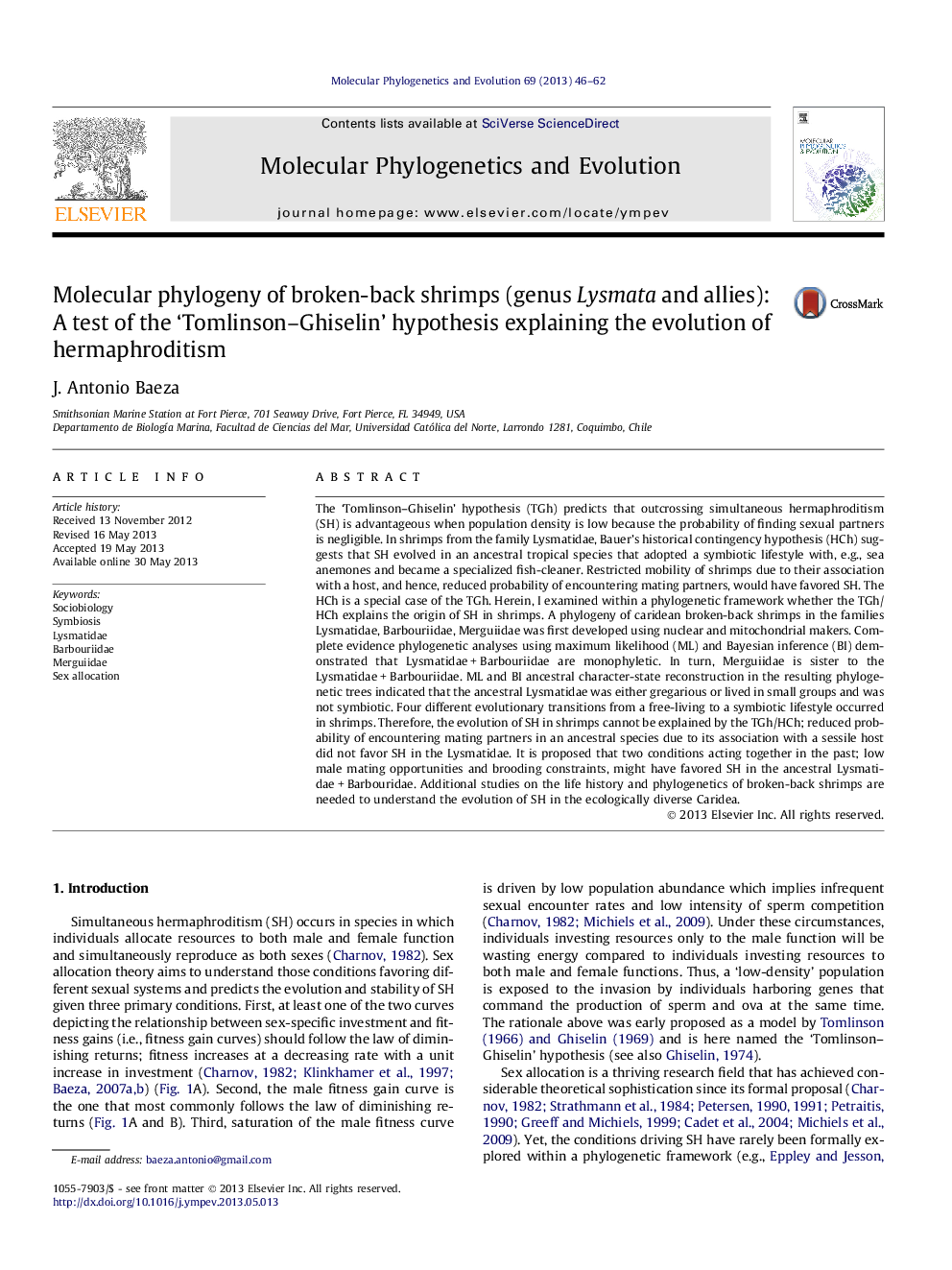| کد مقاله | کد نشریه | سال انتشار | مقاله انگلیسی | نسخه تمام متن |
|---|---|---|---|---|
| 5920063 | 1164279 | 2013 | 17 صفحه PDF | دانلود رایگان |

- I examined whether 'low abundance' conditions explains hermaphroditism in shrimp.
- A phylogeny of Lysmatidae (and allies) shrimp was developed using various makers.
- Lysmatidae + Barbouriidae (L+B) are monophyletic. Merguiidae is sister to L+B.
- The ancestral Lysmatidae was gregarious and was not symbiotic.
- The evolution of hermaphroditism in shrimp is not driven by low abundance conditions.
The 'Tomlinson-Ghiselin' hypothesis (TGh) predicts that outcrossing simultaneous hermaphroditism (SH) is advantageous when population density is low because the probability of finding sexual partners is negligible. In shrimps from the family Lysmatidae, Bauer's historical contingency hypothesis (HCh) suggests that SH evolved in an ancestral tropical species that adopted a symbiotic lifestyle with, e.g., sea anemones and became a specialized fish-cleaner. Restricted mobility of shrimps due to their association with a host, and hence, reduced probability of encountering mating partners, would have favored SH. The HCh is a special case of the TGh. Herein, I examined within a phylogenetic framework whether the TGh/HCh explains the origin of SH in shrimps. A phylogeny of caridean broken-back shrimps in the families Lysmatidae, Barbouriidae, Merguiidae was first developed using nuclear and mitochondrial makers. Complete evidence phylogenetic analyses using maximum likelihood (ML) and Bayesian inference (BI) demonstrated that Lysmatidae + Barbouriidae are monophyletic. In turn, Merguiidae is sister to the Lysmatidae + Barbouriidae. ML and BI ancestral character-state reconstruction in the resulting phylogenetic trees indicated that the ancestral Lysmatidae was either gregarious or lived in small groups and was not symbiotic. Four different evolutionary transitions from a free-living to a symbiotic lifestyle occurred in shrimps. Therefore, the evolution of SH in shrimps cannot be explained by the TGh/HCh; reduced probability of encountering mating partners in an ancestral species due to its association with a sessile host did not favor SH in the Lysmatidae. It is proposed that two conditions acting together in the past; low male mating opportunities and brooding constraints, might have favored SH in the ancestral Lysmatidae + Barbouridae. Additional studies on the life history and phylogenetics of broken-back shrimps are needed to understand the evolution of SH in the ecologically diverse Caridea.
Journal: Molecular Phylogenetics and Evolution - Volume 69, Issue 1, October 2013, Pages 46-62